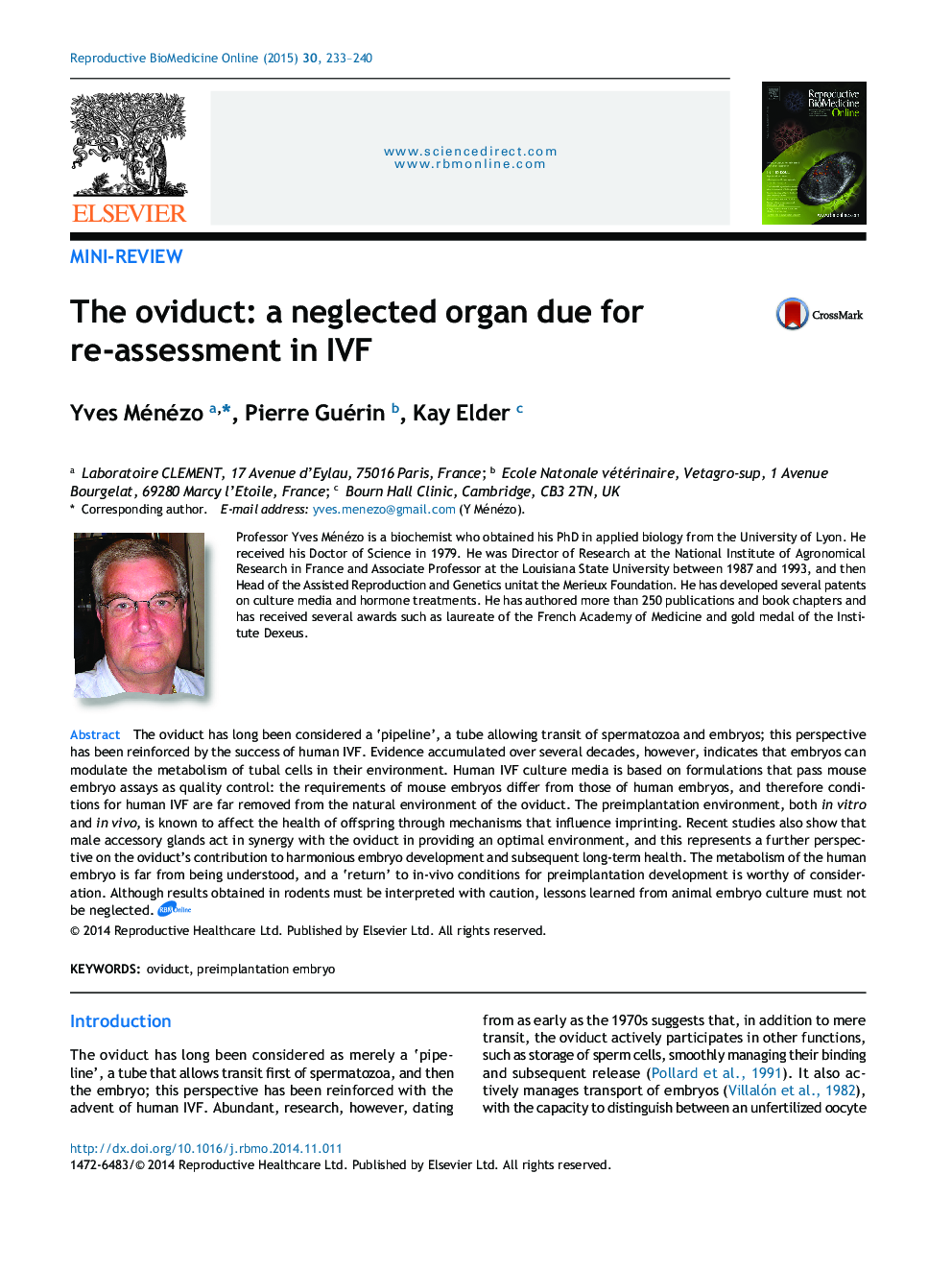| Article ID | Journal | Published Year | Pages | File Type |
|---|---|---|---|---|
| 3970100 | Reproductive BioMedicine Online | 2015 | 8 Pages |
The oviduct has long been considered a ‘pipeline’, a tube allowing transit of spermatozoa and embryos; this perspective has been reinforced by the success of human IVF. Evidence accumulated over several decades, however, indicates that embryos can modulate the metabolism of tubal cells in their environment. Human IVF culture media is based on formulations that pass mouse embryo assays as quality control: the requirements of mouse embryos differ from those of human embryos, and therefore conditions for human IVF are far removed from the natural environment of the oviduct. The preimplantation environment, both in vitro and in vivo, is known to affect the health of offspring through mechanisms that influence imprinting. Recent studies also show that male accessory glands act in synergy with the oviduct in providing an optimal environment, and this represents a further perspective on the oviduct's contribution to harmonious embryo development and subsequent long-term health. The metabolism of the human embryo is far from being understood, and a ‘return’ to in-vivo conditions for preimplantation development is worthy of consideration. Although results obtained in rodents must be interpreted with caution, lessons learned from animal embryo culture must not be neglected.
